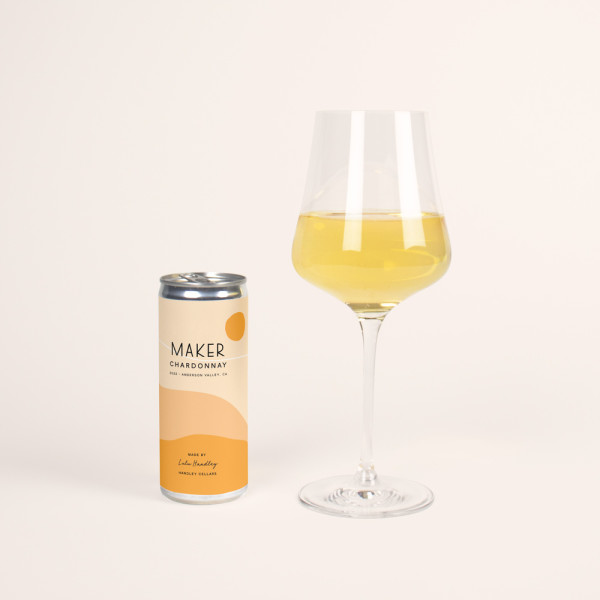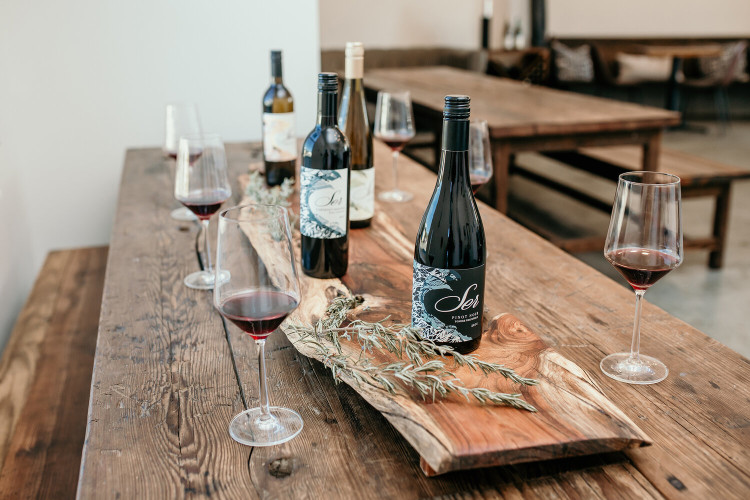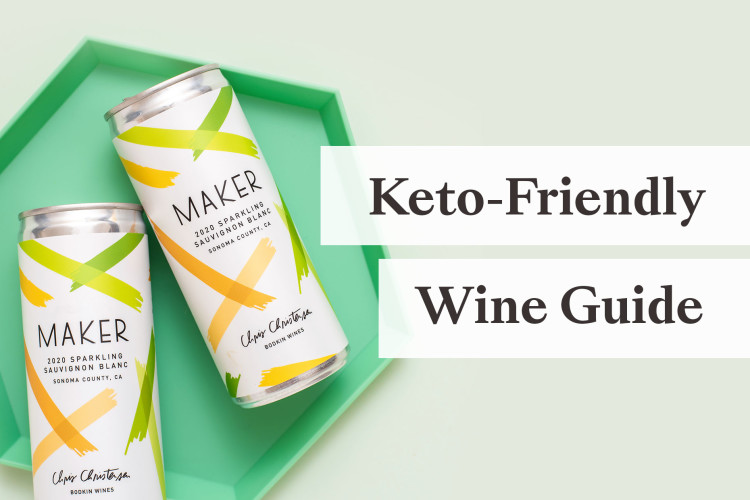Wine School
Oaked vs. Unoaked Chardonnay - Let's Talk Buttery Chard
New Chard, who's this? We break down the difference between oaked and unoaked Chardonnay, and give a sneak peek of what to expect from Maker's new (nice and balanced) Chard.

By Sarah Hoffman
July 13, 2022

Chardonnay is one of the world’s most popular grapes, and for good reason. From a svelte, bubbly Blanc de Blanc to the brie’s decadently oaky companion, it’s the type of grape that can nail any vibe.
But, like everything that’s made it big, Chard has its fair share of haters. The ABC “Anything but Chardonnay” crowd typically associates the grape with big, boozy butter bombs. But Chardonnay can be made in radically different ways that reflect the style and decisions of the winemaker.
Let’s break it down.
The Buttery Chard
When Chard was coming up in California, butter bombs were what the people wanted. And hey, no judgment, you should see the inside of my mom’s fridge—wall-to-wall buttery chards.
So, what makes this style of Chard so buttery and…woody?
It comes down to decisions made in the cellar. The use of oak barrels for aging, particularly “new” and heavily toasted American Oak (surprise, surprise, the French are a bit more subtle), will impart more of those woody flavors and aromas—think vanilla, coconut, and toasted almond.
And the butter? A natural chemical process called Malolactic Fermentation converts tart malic acid (think green apple) into creamy lactic acid (hello, buttered popcorn). Allowing the wine to hang with dead yeast in barrels (stirring on the “lees”) can also contribute to a buttery-creamy texture.
“New World” California Chardonnay is known for turning all these flavors up to 11—woody, buttery wines that burst with pineapple, vanilla, and ripe apple.
The Unoaked Chard
But that’s just one way Chard can be. Under different conditions, the same grape can be the basis for a totally different wine.
On the other end of the spectrum is unoaked Chardonnay—wine aged in stainless steel where the Malolactic fermentation process never gets off the ground.
Steel doesn’t impart flavor to the Chard, so you can taste the grape in all its crisp, mineral glory. Chablis, Chardonnay grown in the Chablis region of France, is known for its delicate citrus, green apple, and floral notes with great minerality.
The Maker Chard
We’re coming to the end of our Goldilocks story. We’ve had the butter bombs and unoaked Chard—now it’s time to get it juuuuust right.
Enter the Maker Chard. We asked our Can Club to let us know what they’d like to see on a scale from 1-10, from unoaked to "drown me in butter".
The result? A 4 / 10. We wanted something refreshing but balanced, with more wine than wood (butter bombs need not apply). After months of searching and dozens of samples, we found the one.
Fermented in Stainless Steel and aged 10 months in neutral French Oak barrels, this Chardonnay from our fine friends at Handley Cellars is rich and round, yet crisp and refreshing. And to get nerdy, it’s stirred on the lees (our dead yeast friends) with approximately one-third allowed to complete malolactic fermentation. You could call it the best of both worlds.
It’s old-world elegance meets classic California Chardonnay. Chardonnay-stans—get ready. And to you chard-skeptics out there, this one deserves a swirl.

Try the Chardonnay
Meyer lemon, nectarine, and toasted almond - it's Old World elegance meets California modern. Fermented in Stainless Steel and aged in neutral French Oak, this Chardonnay is rich and round, yet crisp and refreshing.
Recommended for you
Wine School
The 2020 Canned Wine Report
About Maker
They make it.
Maker partners with best-in-class small producers that craft award-winning wines.
We can it.
We can the wine side-by-side with our winemaker partners, directly from their winery.
You drink it.
We’ll deliver Maker cans and their stories to your door in under 48 hours in California.





